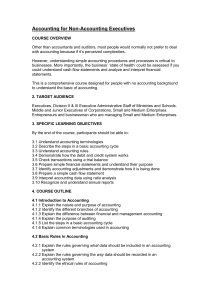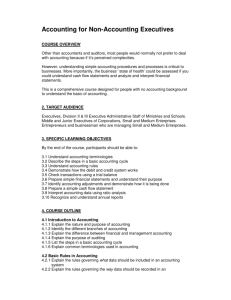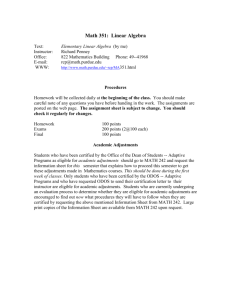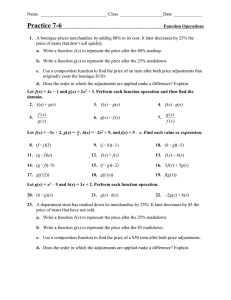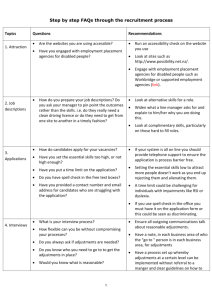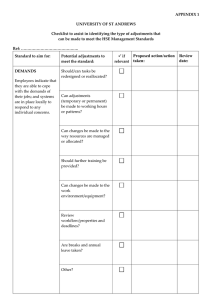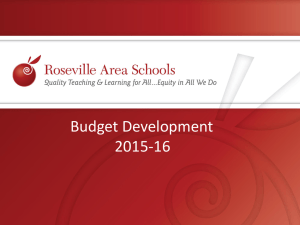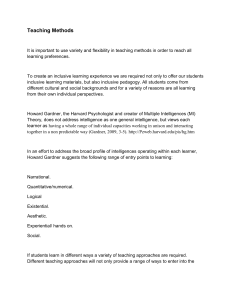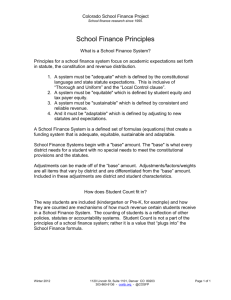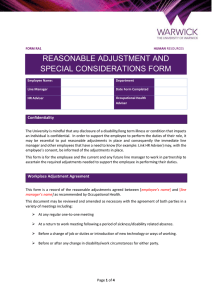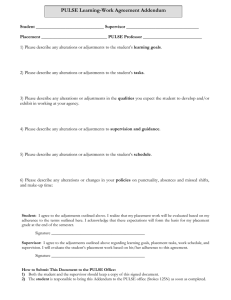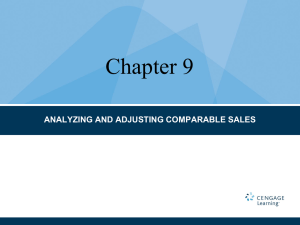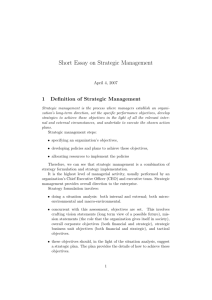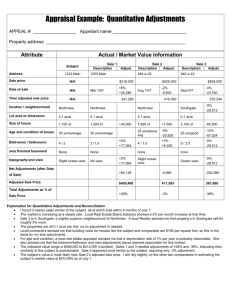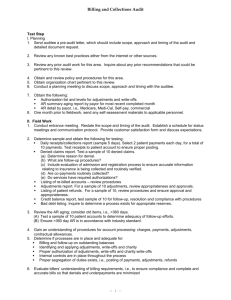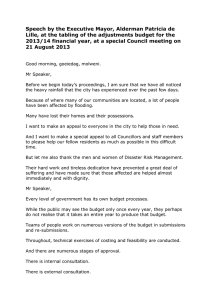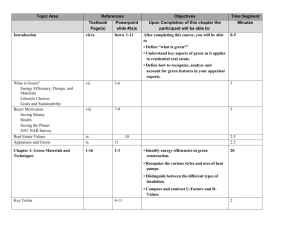Case study three supplementary level of adjustment
advertisement
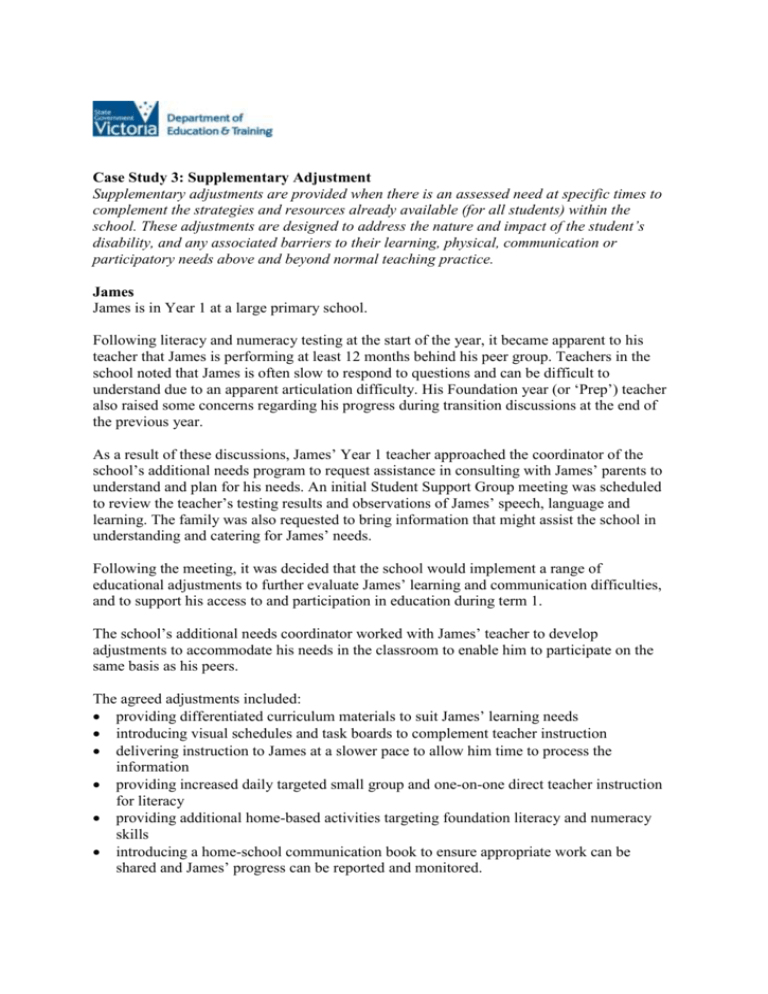
Case Study 3: Supplementary Adjustment Supplementary adjustments are provided when there is an assessed need at specific times to complement the strategies and resources already available (for all students) within the school. These adjustments are designed to address the nature and impact of the student’s disability, and any associated barriers to their learning, physical, communication or participatory needs above and beyond normal teaching practice. James James is in Year 1 at a large primary school. Following literacy and numeracy testing at the start of the year, it became apparent to his teacher that James is performing at least 12 months behind his peer group. Teachers in the school noted that James is often slow to respond to questions and can be difficult to understand due to an apparent articulation difficulty. His Foundation year (or ‘Prep’) teacher also raised some concerns regarding his progress during transition discussions at the end of the previous year. As a result of these discussions, James’ Year 1 teacher approached the coordinator of the school’s additional needs program to request assistance in consulting with James’ parents to understand and plan for his needs. An initial Student Support Group meeting was scheduled to review the teacher’s testing results and observations of James’ speech, language and learning. The family was also requested to bring information that might assist the school in understanding and catering for James’ needs. Following the meeting, it was decided that the school would implement a range of educational adjustments to further evaluate James’ learning and communication difficulties, and to support his access to and participation in education during term 1. The school’s additional needs coordinator worked with James’ teacher to develop adjustments to accommodate his needs in the classroom to enable him to participate on the same basis as his peers. The agreed adjustments included: providing differentiated curriculum materials to suit James’ learning needs introducing visual schedules and task boards to complement teacher instruction delivering instruction to James at a slower pace to allow him time to process the information providing increased daily targeted small group and one-on-one direct teacher instruction for literacy providing additional home-based activities targeting foundation literacy and numeracy skills introducing a home-school communication book to ensure appropriate work can be shared and James’ progress can be reported and monitored. Finally, the Student Support Group arranged to meet with the speech pathologist to discuss James’ speech and language assessment results. This would enable the Group to further understand James’ needs and inform the development of his individual goals.

